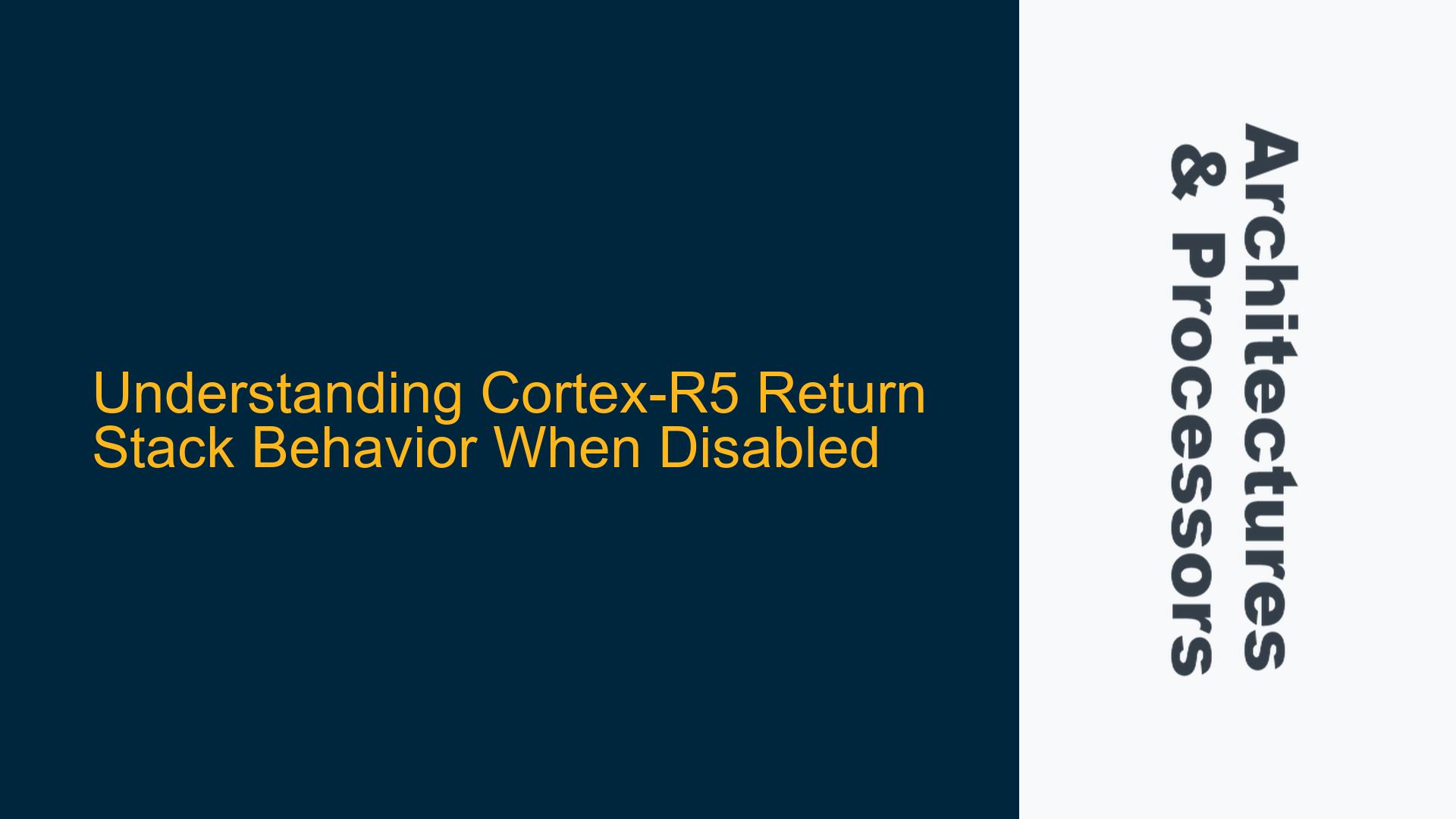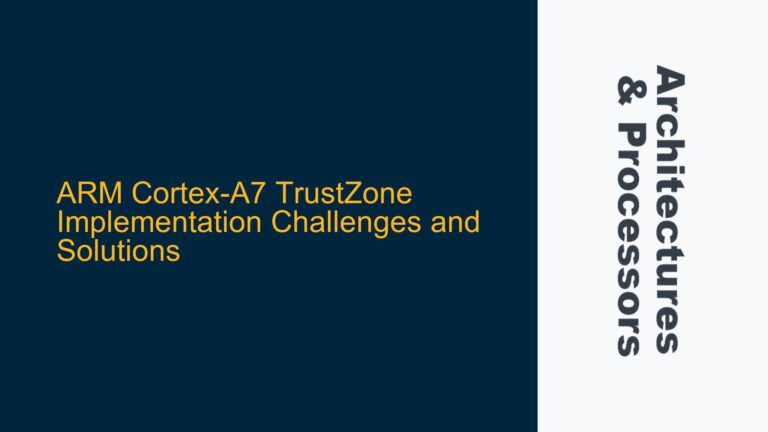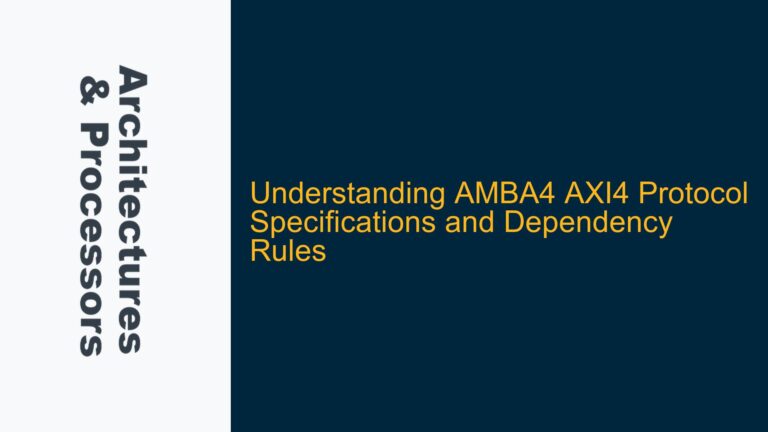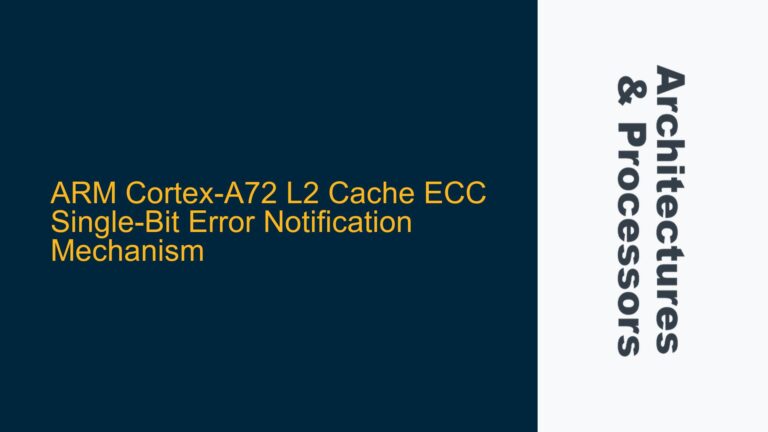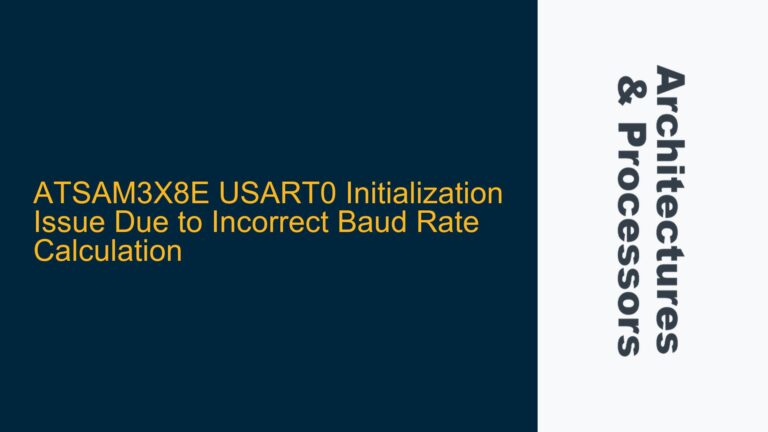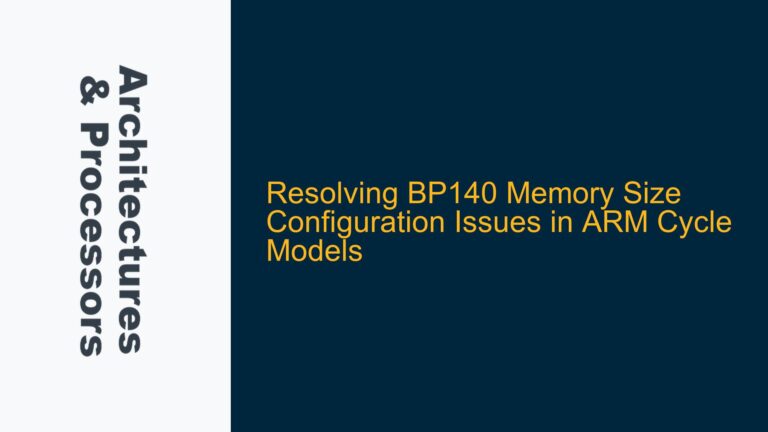ARM Cortex-R5 Return Stack Functionality and Disabling Implications
The ARM Cortex-R5 processor incorporates a return stack to enhance the performance of function calls and returns by predicting the return address. This mechanism is particularly useful in deeply nested function calls, where the processor can avoid the latency associated with fetching the return address from memory. The return stack operates by pushing the return address onto the stack when a function call is detected and popping the address when a return instruction is encountered. However, the behavior of the return stack when it is disabled is a nuanced topic that requires a deep understanding of the Cortex-R5 architecture.
When the return stack is enabled, the processor predicts the return address by popping the address from the return stack upon detecting a return instruction. This prediction allows the processor to continue executing instructions without waiting for the actual return address to be fetched from memory. The return stack is designed to improve the efficiency of branch prediction, which is critical for maintaining high performance in real-time embedded systems.
Disabling the return stack, however, does not entirely eliminate its functionality. According to the Cortex-R5 Technical Reference Manual (TRM), disabling the return stack only disables the pushing of return addresses onto the stack. This raises the question of whether the return stack will still detect return instructions and predict return addresses when it is disabled. The TRM specifies that the return stack will not push new return addresses when disabled, but it does not explicitly state whether the return stack will continue to pop addresses when a return instruction is detected.
This ambiguity can lead to unexpected behavior in the processor’s branch prediction mechanism. If the return stack continues to pop addresses when disabled, it may still predict return addresses based on stale data, leading to incorrect branch predictions. Conversely, if the return stack does not pop addresses when disabled, the processor may experience increased latency when fetching return addresses from memory, potentially degrading performance.
Understanding the exact behavior of the return stack when it is disabled is crucial for developers working with the Cortex-R5 processor, particularly in applications where deterministic performance is critical. The following sections will explore the possible causes of this behavior and provide detailed troubleshooting steps to ensure reliable operation of the processor.
Memory Barrier Omission and Cache Invalidation Timing
One of the primary concerns when dealing with the Cortex-R5 return stack is the potential for memory barrier omission and cache invalidation timing issues. Memory barriers are used to enforce the order of memory operations, ensuring that all previous memory accesses are completed before subsequent operations begin. In the context of the return stack, memory barriers are essential to ensure that the return address is correctly fetched from memory before the processor attempts to use it.
When the return stack is disabled, the processor may still attempt to predict return addresses based on stale data in the return stack. This can occur if the return stack is not properly invalidated or if memory barriers are not correctly implemented. The Cortex-R5 processor relies on the correct timing of cache invalidation to ensure that the return stack does not contain outdated addresses. If cache invalidation is not performed at the appropriate time, the return stack may continue to predict return addresses based on incorrect data, leading to branch mispredictions and potential system instability.
The timing of cache invalidation is particularly critical in real-time systems, where deterministic performance is essential. If the cache is invalidated too early, the return stack may be cleared before the return address is needed, resulting in increased latency when fetching the return address from memory. Conversely, if the cache is invalidated too late, the return stack may continue to predict return addresses based on outdated data, leading to incorrect branch predictions.
To mitigate these issues, developers must carefully consider the timing of cache invalidation and the use of memory barriers when disabling the return stack. The Cortex-R5 TRM provides guidelines for implementing memory barriers and cache invalidation, but these guidelines must be tailored to the specific requirements of the application. In some cases, it may be necessary to implement custom cache invalidation routines to ensure that the return stack is properly cleared before the processor attempts to predict return addresses.
In addition to memory barrier omission and cache invalidation timing, developers must also consider the impact of other system-level factors on the behavior of the return stack. For example, the use of speculative execution and out-of-order execution in the Cortex-R5 processor can further complicate the behavior of the return stack when it is disabled. Speculative execution allows the processor to execute instructions ahead of time, potentially leading to incorrect branch predictions if the return stack is not properly managed. Out-of-order execution can also impact the timing of memory operations, further complicating the behavior of the return stack.
Implementing Data Synchronization Barriers and Cache Management
To ensure reliable operation of the Cortex-R5 processor when the return stack is disabled, developers must implement data synchronization barriers and proper cache management techniques. Data synchronization barriers are used to enforce the order of memory operations, ensuring that all previous memory accesses are completed before subsequent operations begin. In the context of the return stack, data synchronization barriers are essential to ensure that the return address is correctly fetched from memory before the processor attempts to use it.
The Cortex-R5 TRM provides several instructions for implementing data synchronization barriers, including the Data Synchronization Barrier (DSB) and the Instruction Synchronization Barrier (ISB). The DSB instruction ensures that all memory accesses before the barrier are completed before any memory accesses after the barrier are executed. The ISB instruction ensures that all instructions before the barrier are completed before any instructions after the barrier are executed. These instructions can be used to enforce the correct order of memory operations when disabling the return stack.
In addition to data synchronization barriers, developers must also implement proper cache management techniques to ensure that the return stack is properly invalidated when it is disabled. The Cortex-R5 processor provides several cache management instructions, including the Invalidate Instruction Cache (ICI) and the Invalidate Data Cache (IDC) instructions. These instructions can be used to invalidate the cache and ensure that the return stack does not contain outdated addresses.
When implementing cache management techniques, developers must carefully consider the timing of cache invalidation to ensure that the return stack is properly cleared before the processor attempts to predict return addresses. In some cases, it may be necessary to implement custom cache invalidation routines to ensure that the return stack is properly cleared. For example, developers may need to invalidate the cache immediately before executing a return instruction to ensure that the return stack does not contain outdated addresses.
In addition to data synchronization barriers and cache management, developers must also consider the impact of other system-level factors on the behavior of the return stack. For example, the use of speculative execution and out-of-order execution in the Cortex-R5 processor can further complicate the behavior of the return stack when it is disabled. Speculative execution allows the processor to execute instructions ahead of time, potentially leading to incorrect branch predictions if the return stack is not properly managed. Out-of-order execution can also impact the timing of memory operations, further complicating the behavior of the return stack.
To mitigate these issues, developers must carefully consider the timing of cache invalidation and the use of memory barriers when disabling the return stack. The Cortex-R5 TRM provides guidelines for implementing memory barriers and cache invalidation, but these guidelines must be tailored to the specific requirements of the application. In some cases, it may be necessary to implement custom cache invalidation routines to ensure that the return stack is properly cleared before the processor attempts to predict return addresses.
In conclusion, the behavior of the Cortex-R5 return stack when it is disabled is a complex topic that requires a deep understanding of the processor’s architecture and the impact of system-level factors on its operation. By implementing data synchronization barriers and proper cache management techniques, developers can ensure reliable operation of the processor and avoid the potential pitfalls associated with disabling the return stack. Careful consideration of the timing of cache invalidation and the use of memory barriers is essential to ensure that the return stack does not contain outdated addresses and that the processor correctly predicts return addresses when the return stack is disabled.
